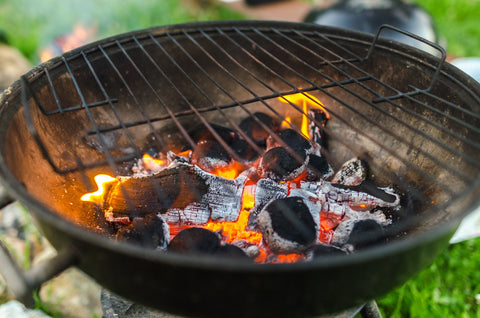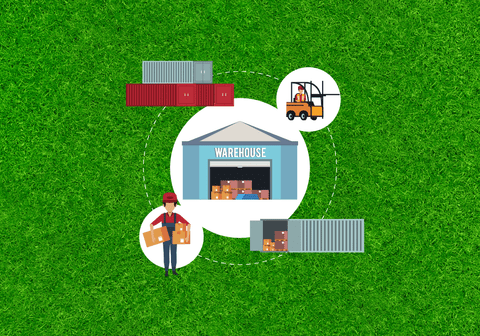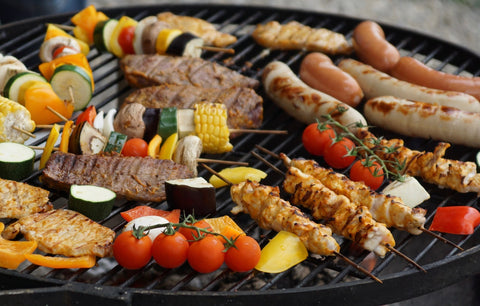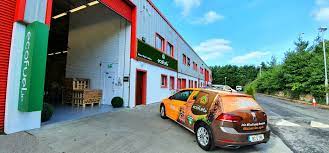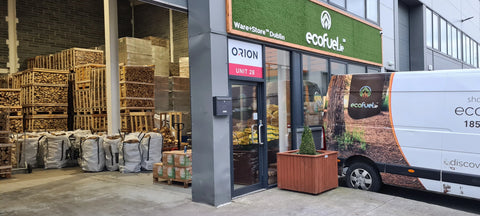The days are a little longer, it’s raining a little less, and the sun is threatening to shine for more than a few hours at a time. All the signs are there. Summertime is upon us! With the rising temperature comes the tastiest garden celebration; the barbecue. Whether you’re working from the disposable grills or state of the art set up in your backyard, the sound, smell, and sight of a barbecue flickering is enough to set your belly rumbling.

There are two main types of barbecue grills you need to know about; gas and charcoal. Disposable grills and electric grills will get the job done, but the taste of the food and the quality just won’t be the same.
Gas barbecue grills are a worldwide best seller because of their convenience and ease. Simply attach a canister of gas, light it up, and in 5-10 minutes you’re ready to cook! Temperature control settings give you better control over how quickly your food is cooking so the task is much easier. So why then are charcoal barbecues gaining notoriety as the chefs choice for grilling?
Barbecuing with charcoal may not have the convenience involved with gas barbecuing, but the advantages can be tasted in the unique flavour charcoal gives your food fresh off the grill. The classic smoky aroma and charred texture are what people love about barbecued foods, and the results are best obtained from organic fuels. Once you’ve made the decision to cook with charcoal, there’s only one more thing to worry about; lumpwood or standard charcoal?

What's Lumpwood; What's the Difference?
At its core, all charcoal, whether it is lumpwood or briquette, is made from the same stuff: wood. In an optimum setting, the wood is burned without any oxygen present until all the water, methane, hydrogen, and tar is burned out of it but, importantly, before the wood turns to ash. The resulting product is pure carbon or char. When ignited in the presence of oxygen (i.e when it’s in your barbecue), it releases a massive amount of energy, thus burning at extremely high temperatures for a long time.
With lumpwood production the carbon remains are taken directly from burning, sorted by size and packaged for selling. For charcoal briquettes density of the product is vital. The carbon remains are therefore gathered, and further compressed using additives to make it bind together and usually liquids such as lighter fluid or paraffin will be added to help the charcoal ignite.
Due to these additives used in charcoal briquette production lumpwood is considered to be the more natural and organic material for cooking with. Still, some briquette producers steer away from including ignitable fluids in their charcoal and only use cornstarch to bind the char together. We advise researching your brands to make sure you are using one of the later products to avoid any chemical-like taste rubbing off on your food.
Benefits of Lumpwood Charcoal
Master BBQ grillers and seasoned chefs around the world have been taken by storm at the emergence of lumpwood charcoal. This is mainly due to the organic nature of lumpwood charcoal, the variety of flavours lumpwood can bring to your barbecue, and of course, the easy clean up afterwards.
To get the most heat from your lumpwood, you need to pay attention to how the lumpwood is arranged in your grill. This can be difficult when using bags with irregularly shaped bits of wood, but the effort in arranging your lumpwood before lighting your barbecue will be worth it when you get a longer burning time and therefore better value for your bag. Masses of irregularly shaped lumps can slot in together blocking airflow which will, in turn, stifle the heat coming from your fuel. Arranging the lumps to allow for good airflow before lighting will benefit you in the long run.

The lack of additives and binding agents used in making lumpwood means that it will burn cleaner and combust more efficiently, leaving behind less ash to tidy up afterwards. Whatever does remain after the embers have cooled and the plates have been licked clean can be used in your garden, either add a scattering of the remaining ashes to your compost pile or sprinkle lightly throughout your yard. The remnant nutrients will help fertilize the soil and it can also be a handy form of natural pest control.
Wood Varieties of Lumpwood
Broadly speaking, charcoal and by extension lumpwood, is usually made from hardwood materials. The reason for this is that hardwood is denser and therefore will burn for longer, this is especially the case when the wood has been dried and burned in the charcoal making process. There are many varieties of hardwood that are suitable for use in lumpwood production and each one will leave a slightly different flavour on your food after cooking on your barbecue.
Oak is a universal favourite to cook with. This is because it has a medium smokey flavour that works well with a wide variety of food from red meat to fish, it’s not too overpowering but is distinctive.
Birch is a lighter variety of hardwood and so gives a more delicate taste to food when used in cooking. The flavour profile has been described as ‘mild and sweet’ and is often favourably compared to cooking food with maple wood.
Alder is an excellent all-round wood type to cook with, leaving a subtle and sweet flavour to your food. While it works especially well when cooking fish the delicate flavour from Alder charcoal is a pleasant addition to all foods traditionally cooked on the grill.
Beech is a good medium flavoured wood to cook with. The flavours are milder than that of a densely flavoured Hickory wood but more distinctive than Alder. It is known for transferring a slightly nutty flavour to the food it is cooked with.
The most important thing to consider when buying lumpwood charcoal is the type of wood used but also the source of the wood. Many bags of lumpwood are made from a mish-mash of different hardwoods meaning the type of wood you are cooking with and also the sustainability in harvesting it is questionable.
The uncertainty in what types of wood are used goes hand in hand with the uncertain origins of the product itself. Unlicensed charcoal production in Africa has led to massive deforestation across the country and specifically in nature reserves. This charcoal is then imported across the world and mixed with locally sourced charcoal clouding the field for customers trying to make sustainable choices.

In EcoFuel, we have partnered with Marienburg Charcoal based in Latvia to ensure single species bags of lumpwood charcoal and also traceability and sustainability in the products we sell. Marienburg sources their wood from local suppliers who run sustainably managed forests. Each bag of lumpwood produced is guaranteed to be exactly what it says on the pack, whether that is Alder, Oak, or Birchwood.
Cooking With Lumpwood
The first step to cooking with lumpwood is obviously lighting it up. For this, you can use lots of options but I can’t recommend enough that you don’t use lighter fluid or kerosene on the lumpwood and light it.
Natural alternatives include putting oil (vegetable or rapeseed) on dry newspaper and stack your lumpwood around it. Touch a lit match to the newspaper and it will ignite and light the lumpwood. You could use one of our excellent natural and organic Waxie Firelighters, made from sawdust and wax in Ireland there are no chemicals used so they are 100% natural. Finally, a little tip we picked up from master chef and foodie Erica Drum, hang on to some orange peel next time you’re catching up on your vitamin C. Place it in the grill surrounded by your lumpwood and it will easily catch to ignite your whole grill.
Now that you've got it going, the ideal way to cook with lumpwood is to create heat zones in your grill. To do this you simply need to ensure that you don’t have lit lumpwood under every inch of your grill. Allow the centre of your grill to be the hottest with burning embers here and then you can use this area to sear or cook quickly while leaving the perimeter of your grill for slower cooking.
Temperatures in your barbecue can be difficult to gauge without a thermometer so we’ve included a very ‘handy’ guide to how hot your lumpwood is burning, all you need to do is hold your hand approximately a foot over the grill and see how long you can hold it there for. Simples!
|
Time Palm Held Over Grill |
Grill Heat |
Temperature Range |
|
Less than a second |
Very hot |
350°C |
|
1-2 seconds |
Hot |
200 - 260°C |
|
3-4 seconds |
Medium |
175 - 190°C |
|
5-7 seconds |
Medium-Low |
160 - 175°C |

